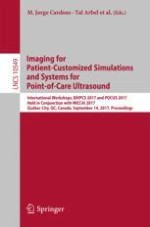2017 | Supplement | Buchkapitel
A 3D Ultrasound Informed Model of the Human Gastrocnemius Muscle
verfasst von : M. Alipour, K. Mithraratne, R. D. Herbert, J. Fernandez
Erschienen in: Imaging for Patient-Customized Simulations and Systems for Point-of-Care Ultrasound
Aktivieren Sie unsere intelligente Suche, um passende Fachinhalte oder Patente zu finden.
Wählen Sie Textabschnitte aus um mit Künstlicher Intelligenz passenden Patente zu finden. powered by
Markieren Sie Textabschnitte, um KI-gestützt weitere passende Inhalte zu finden. powered by
